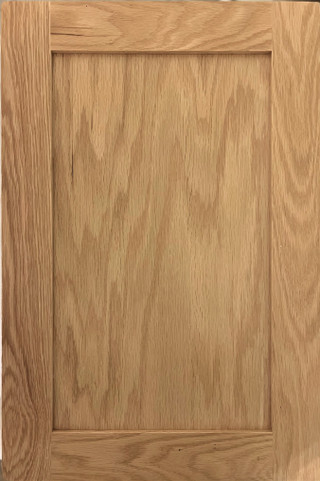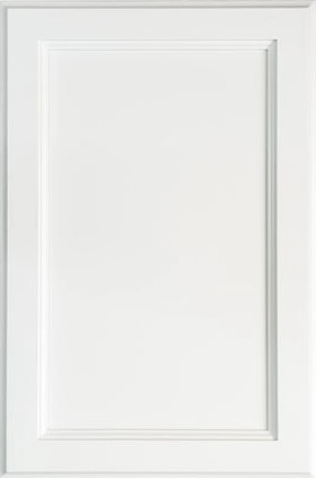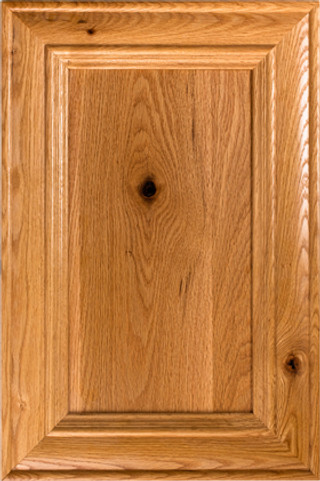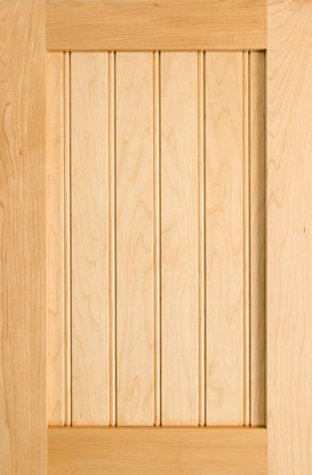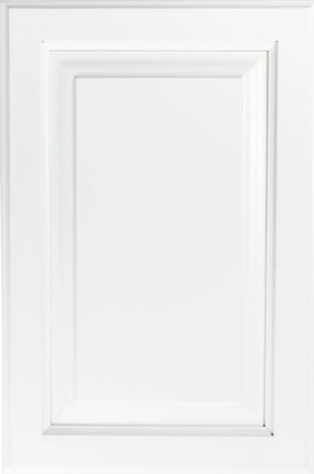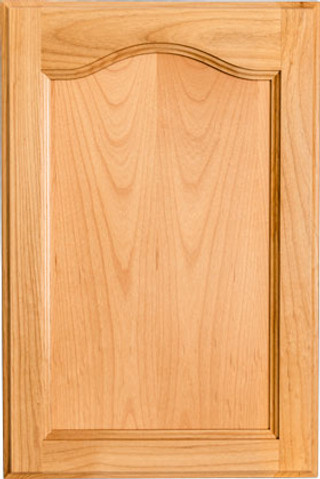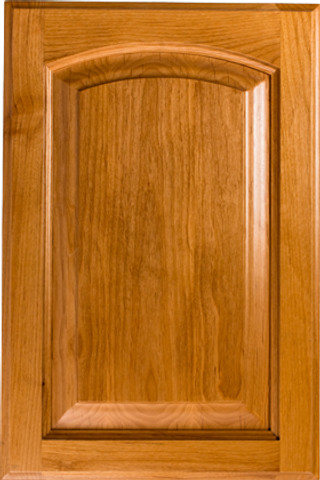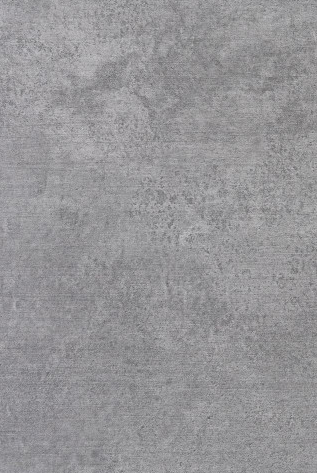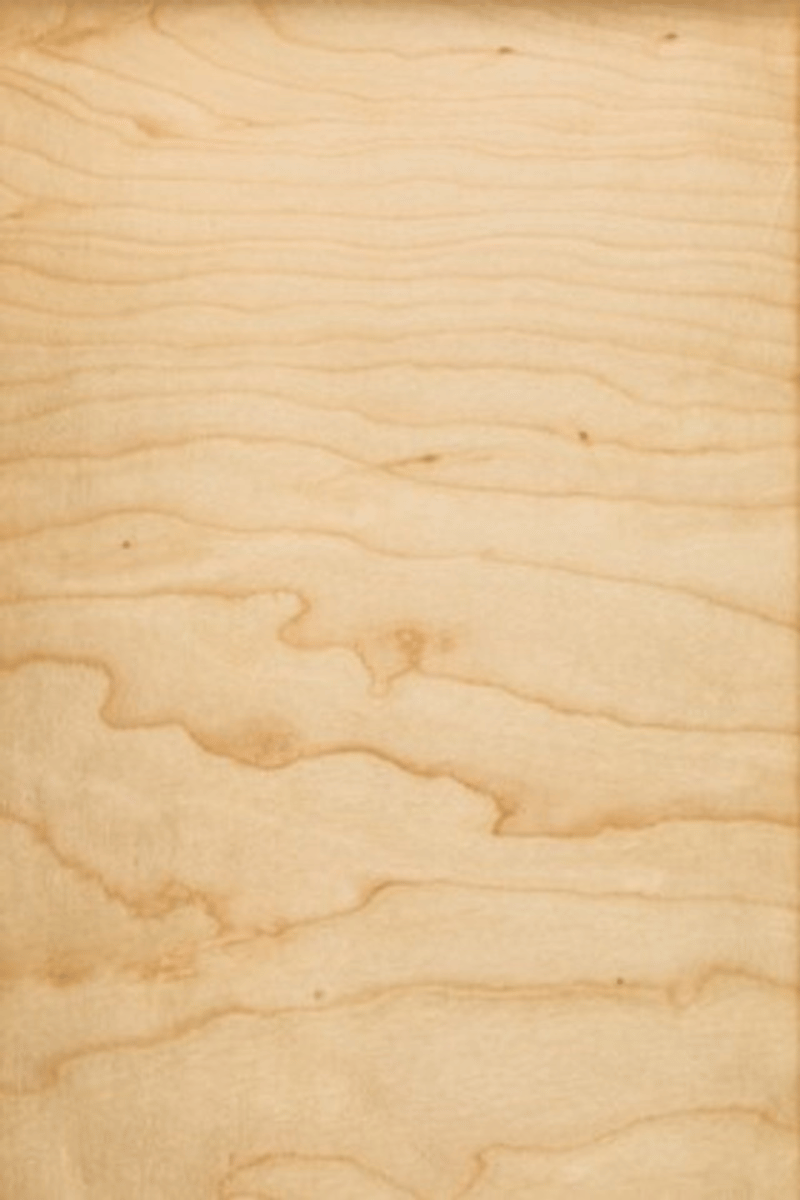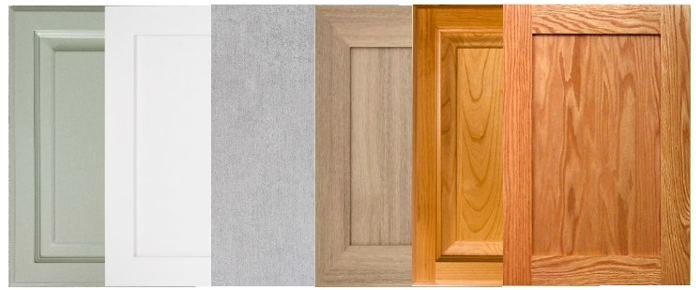
When it comes time to choose replacement cabinet doors, it’s important to find a cabinet door you’ll enjoy making a permanent part of your home. Considering factors like the door’s design, wood species, and finish will help you zero in on the perfect style of cabinet door. With this guide, you can get closer to finding the right cabinet doors for your home.
How To Choose Your Ideal Style of Cabinet Door
With so many options, it can be challenging to determine where you should start with your kitchen cabinet refresh. However, before looking at cabinet door designs, you should closely examine your home interior design style and your wallet to guide your search.
Home Design Style
Your first step is thinking about how your home feels and how it looks currently. Your current style is the first step in guiding your choice in cabinet door designs. For example, if you have a bright kitchen focused on minimalist design with sharp lines, then a dark, ornate kitchen cabinet door style won’t be the best fit.
Think about factors like your home’s color scheme, lighting, décor style, and architectural features. Consider whether your home has a bright, open floor plan or if it feels dimmer and cozier. Look around at the geometry of the doorways, countertops, and walls to decide if your home incorporates more curves or sharp lines. All of these questions are instrumental in determining the ideal cabinet door style.
Price
Cabinet door styles can have a wide range of prices, so determining your budget can help you make the right decision. Browse through different wood species, door designs, and finishing options to get an idea of what you might spend.
If you are on a budget, you can still find quality cabinet doors at affordable prices. However, you may focus on more affordable woods, designs, and finishes. You may also consider turning to a paint-grade or unfinished door to save some money with a DIY project.
How to Decide Between Types of Cabinet Doors
Once you have your budget and vision laid out, the best place to start is to think about the type of cabinet door you want. How your doors are hung on your cabinet frames can completely change the appearance of the space.
Full-Overlay
Full overlay cabinet doors are set where the cabinet doors completely overlap the frame of the cabinets. In this type, the doors nearly touch the surrounding doors with no space between them. This style provides for cleaner lines and less empty space.
Partial-Overlay
Partial-overlay cabinet doors are also set on top of the cabinet frame but with space between the doors and drawer fronts. Partial-overlay doors, also known as standard-overlay doors, are the most popular construction for cabinet doors and have been common in homes for decades. These are the most affordable option.
Inset
Inset cabinet doors are a less-common option where the cabinet doors and drawers are set inside the cabinet frame. This style is unique and creates elegant, smooth lines. Inset doors are highly desired, but their complex design makes them more expensive and more difficult to pull off.
Choose from Popular Cabinet Door Styles
Whether you want a minimalist cabinet door with straight lines, a detailed door with curves and contour, or a door with a glass panel, the options are nearly endless. The following are the most popular styles of cabinet doors, giving you a great starting point.
Shaker
Shaker cabinet doors are the most common and most popular of all cabinet door styles, largely due to their surprising versatility. Shaker doors feature clean, straight lines and the simplicity of a rectangular frame surrounding an inset rectangular panel.
Thanks to their smooth and simple design, shaker cabinets work perfectly in several design styles, fitting in well with both traditional and modern homes. This design also makes shaker doors a blank canvas for any type of kitchen cabinet hardware, allowing you to choose handles or pulls that accent the rest of the space.
Recessed Panel
Recessed panel doors provide texture and depth to any space. These doors consist of a frame raised on top of an inner panel. Recessed panel doors can feature sharp lines, steep arches, deep groves, or textured edges. These doors fit nicely with traditional design styles, but simpler designs work in modern homes as well.
Raised Panel
Raised panel cabinet doors command your attention thanks to the highlighted inset panel. Raised panel doors feature a frame with a higher center panel. These doors can incorporate a variety of designs around the center panel, from smooth curves to sharp lines. Raised panel doors are a great choice for homeowners who want a more ornate kitchen or bathroom.
Arched
Arches are still a timeless part of interior design. Arched cabinet doors compliment any home with their tasteful, detailed design and can range from simple smooth arches to designs with sharp curves and turns. Arched cabinet doors are excellent for complimenting traditional and classic-styled homes, fitting well with anything from farmhouse to Mediterranean styles.
Slab
Slab cabinet doors have quickly become one of the most popular design styles of the last several years. The sleek, simple design of slab cabinet doors has made them an easy go-to for homeowners looking to refresh their cabinets. These doors are simply a smooth slab of wood with sharp rectangular edges.
Their minimalist design is perfect for modern and contemporary design styles. Plus, slab cabinet doors can work with naturally finished wood or a professional paint job to fit with any color scheme. Edge-banded slab cabinet doors look great either with or without hardware, allowing you to tailor your space down to the last detail.
Glass Panel
Glass panel cabinet doors are excellent for making your space feel brighter, larger, and more open. Plus, they are a great way to show off your extravagant kitchenware or your collection of novels. Glass-ready doors are rather versatile and can come with anything from a single panel up to a combination of 4 panes or 6 panes.
Glass panel doors look great in both modern and traditional design styles, like cottage, Mediterranean, farmhouse, and more. Be sure to use extra caution when closing glass panel kitchen cabinet doors.
Paint-Grade
Paint-grade cabinet doors are made from unfinished wood, so you can paint them with a color that perfectly matches your space. These doors make for an excellent DIY project that allows you to avoid compromising on the color scheme you want for your kitchen, bathroom, or office space.
Painted
If you want a professionally painted cabinet door delivered right to your door, you can have the door shipped painted straight from the warehouse in the color you choose. Painted cabinet doors are typically made from hardwoods with a closed grain, like maple and poplar.
Select the Right Wood Species
Depending on the style of door you pick, you can choose from a handful of possible wood species. You’ll want to choose your wood species based on how well it works in the environment you’ll be installing it in and how it holds your desired finish.
Cabinet doors used in closets, garages, and storage rooms are usually lower-cost woods, like particleboard or oak. However, kitchen and bathroom cabinet doors require a strong, durable, and dense wood with a strong finish to withstand high humidity and temperature fluctuations. Alder, oak, and maple are all great choices in these areas.
Your final choice will likely come down to the natural grain pattern and shade of the wood. Ordering samples can help you visualize the end result and decide which works best for your home.
Find Your Ideal Cabinet Doors Style
When you’re ready to choose cabinet doors for your home, you’ll want to think carefully about your home design and what styles would be the right fit. Once you have decided, you can be confident that CabinetDoors.com builds all our cabinet doors with quality in mind.
After choosing your style and finish, you can have your custom doors delivered directly to your door in a matter of weeks. Contact us if you have any questions about deciding on or ordering cabinet doors—we are happy to help.




